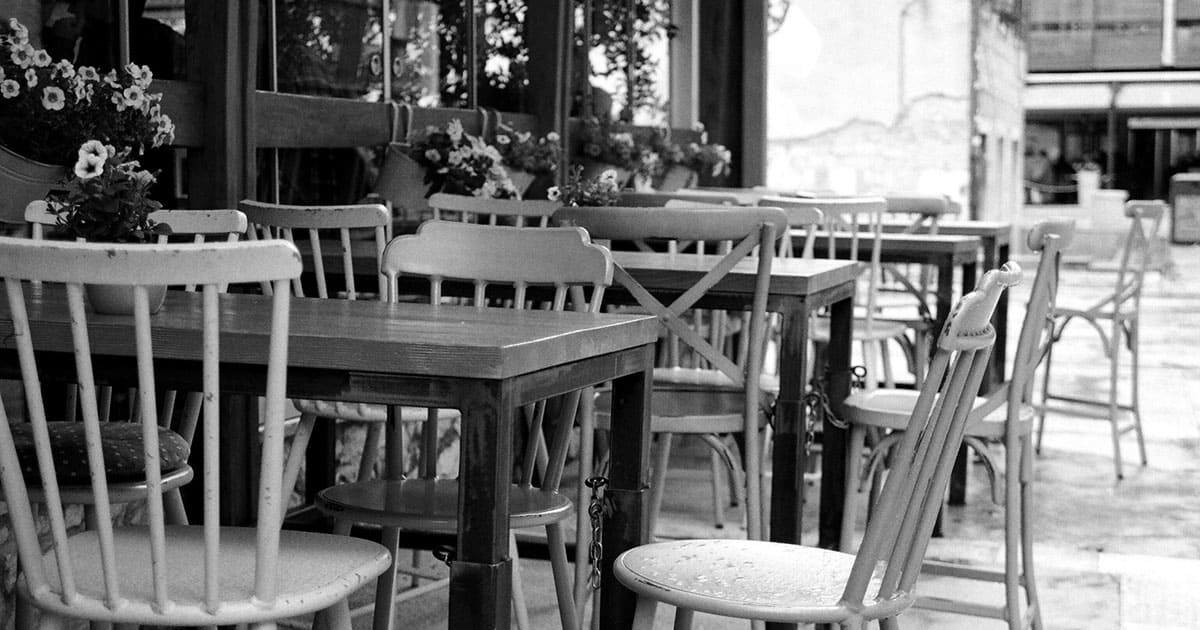
The paradox of outdoor dining and car parking
Share
Posted December 8, 2020
Business Strategy, Tourism & Events, Town Planning
When does outdoor dining trigger, or when should it trigger, requirements for additional car parking?
Using outdoor space to contribute vibrancy and a sense of place to communities, retail, shopping precincts and neighbourhood centres is not a new concept.
Outdoor dining is one of those activities, but hospitality owners often run into a quandary when trying to work through applications and requirements, especially requirements for additional car parking.
This car parking debate is an ongoing, circular, self-defeating argument that never seems to goes away.
Café and restaurant operators naturally want to maximise the space for which they pay rent and receive the best financial return. Development assessment planners, on the other hand, will suggest that this is increasing “use area” and as such, additional car parking will be required.
Let us present a hypothetical case of how the situation could play out for a hospitality owner within a current coastal planning scheme.
If they wish to add outdoor dining within their property, it may require a Material Change of Use (MCU) application (open the chequebook). It has the potential, as it is increasing use area, to require additional car parking spaces to be provided (good luck with that). They may also find that they are now over Site Cover and Plot Ratio provisions (meaning approval is unlikely – the planners in the world will understand this).
If, at the end of the day, they are successful in gaining approval, they will have the same conditions as before, AND they will be hit with an Infrastructure Charge for the additional use area (they’ll need that chequebook again).
They consider all options and realise they can also request from Council to have what is known as Footpath Trading or, for a better description Footpath Dining. Footpath Dining usually occurs on Council land, i.e. road reserve, park, etc. They can apply to Council to use the area and if approved they pay an annual fee for its use, beef up your Public Liability Policy, and away you go – no need to pay Infrastructure Charges, no need to find additional car parking spaces. They can even apply to the OLGR to have the area licensed. This Footpath Dining application is usually processed within 20 business days, compared to the MCU application, which may take up to 55 business days.
In effect, the number of people able to use the space doesn’t necessarily change between the MCU route vs the Footpath Dining route. But it is only under the MCU route that additional requirements for car parking are required.
Councils in tourism orientated local government areas need to understand how confusing and illogical this is to a hospitality operator.
Interestingly, surveys have been taken pre-covid in key tourism localities within cafes and restaurants with outdoor dining looking at visitation into the tourism precinct pre 10 am. Of those visitors, 92% utilising outdoor dining were in the precinct to walk, swim, other forms of exercise and that attending the café was a secondary outcome for being in the precinct.
Other interesting data collated was:
- Over the three key dining periods (breakfast, lunch and dinner) 87% of all diners were staying within the tourism precinct and walked to the venue
- post 6 pm, even during peak tourism periods, key precincts have vacant on-street car parking spaces available
The ongoing challenge that is outdoor dining, car parking, use area, site cover will never reach a clear and concise conclusion. Still, in a post covid hospitality industry, a greater understanding of operating pressures and real, not perceived, impacts of additional space usage on operators must be considered. And they must be considered in a meaningful and respectful way by those assessing applications.
The prompt advice and expertise of the RG Strategic team at the town planning stage, has allowed us to push forward with our developments far quicker than we had expected, through a far shorter Council approval process, and this has resulted in significant cost savings. This prompt and valuable advice has extended to the operational works and hydraulics requirements of the development, and we look forward to a long relationship with RG Strategic.
Hayden Rooney
The Junction - Coolum





The team at RG Strategic are professional, transparent, honest, and responsive. Russell kept us consistently informed of the planning process providing us with a piece of mind to ratify our project.
Chris Anstee
Short Term Accommodation





We found Russell to be great to deal with. Explaining things clearly & honestly. Highly recommend him to anyone.
Kristie Hopkins
Short Term Accommodation - Sunshine Beach





We use Russell and the team to get our liquor license for our new coffee roastery in Yandina. We couldn’t recommend them enough we received our liquor license in a fantastic timeframe and it really took the hassle out of the hard process. Do yourself the favour and get Russell out to your venue – his experience is second to none! Very satisfied customer.
Edward Stanley
Gun Cotton Café - Yandina









